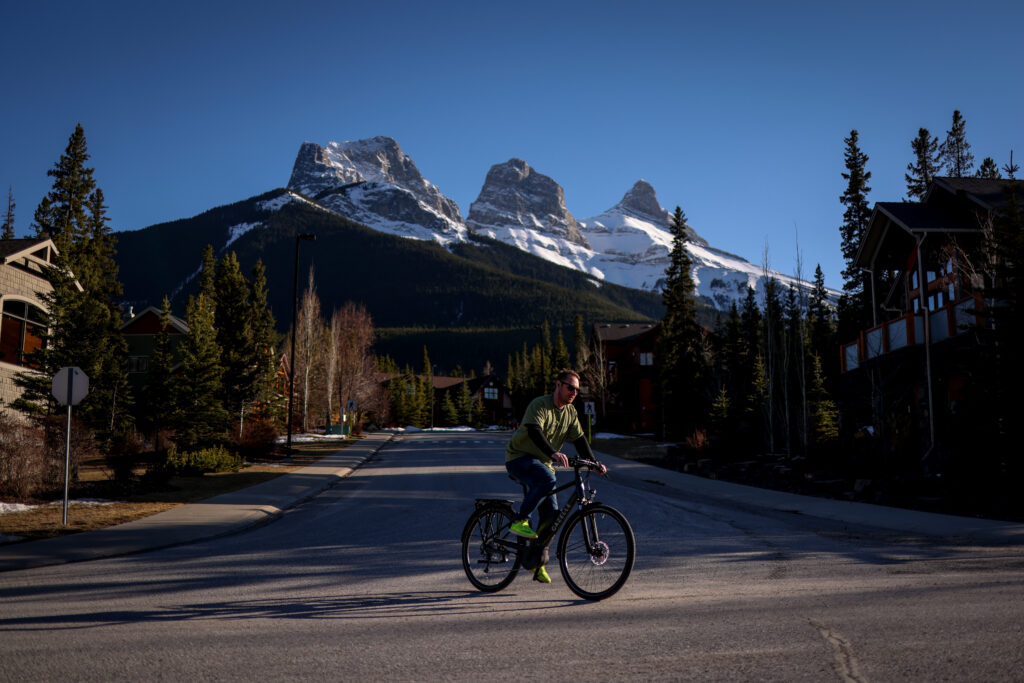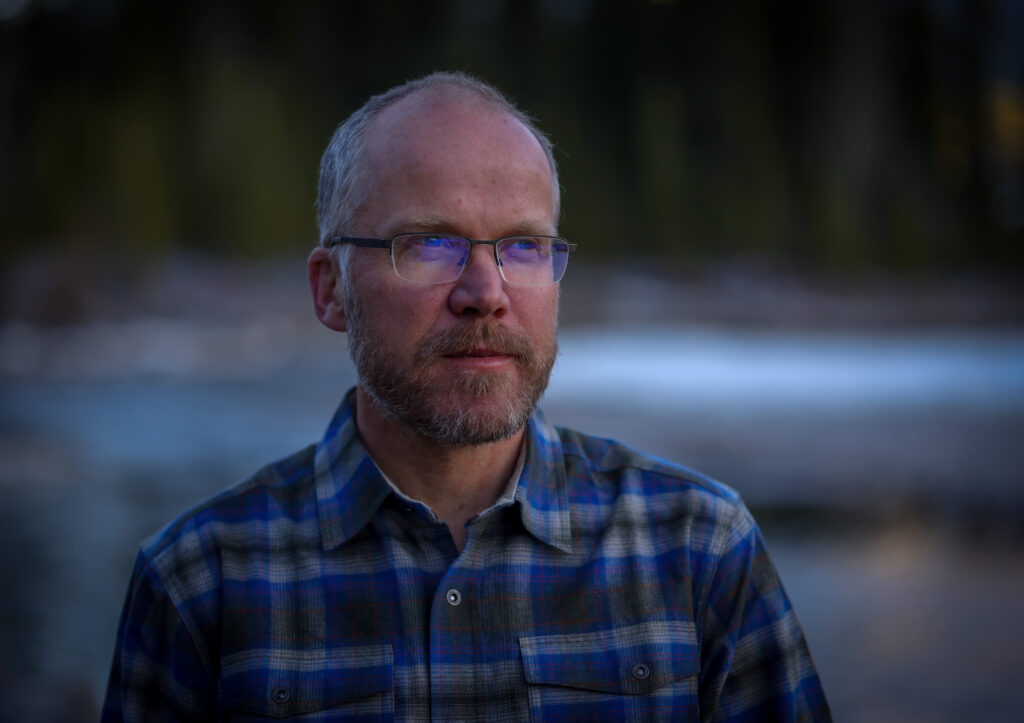
Hope for a huge, ancient and imperilled fish
First Nations are leading efforts to make sure lake sturgeon can find a home in...
A decision this week to reject plans for a large development in Canmore — part of a proposal to nearly double the population — is the latest milestone in a long-standing debate at the crux of the booming Alberta tourist town’s identity.
Residents of Canmore have long deliberated how the popular mountain community can balance the conflicting needs of wildlife and humans who live in the Bow Valley. Now, with the developer raising the possibility of an appeal while conservation advocates double down on efforts to protect local wildlife, the controversy is far from over. In the meantime, pressures in the community continue to grow.
Over the last four decades, Canmore has transformed from a community reliant on coal mines into a bustling tourist destination, spurred on by the 1988 Olympics and growing in popularity ever since. The boom drew people, businesses and dollars — but also traffic congestion, sky-high real estate costs and human encroachments into a critical wildlife corridor.
In the debate over how to handle these issues, a swath of privately owned land on the community’s east side has often been in the spotlight. But there’s never been lasting agreement on how that property — much of it on land that covers an underground system of tunnels formerly used for coal mining — should be developed, if at all.
Over the last six months, Canmore’s town council debated the future of the lands, while residents organized vocal opposition to the proposals. More than 240 people spoke out during public hearings, including members of the Stoney Nakoda First Nation, and hundreds more wrote letters.
On May 25, council rendered its decision — rejecting the second of two proposed development projects that, combined, would have nearly doubled the size of the town’s population, extended its footprint and impeded on a wildlife corridor important to species such as grizzly bear, cougars and wolves. Council defeated the first proposal in a unanimous decision last month.
“Putting this much population up against a very sensitive wildlife corridor is a concern for me,” Councillor Karen Marra said during the meeting. “As once said, you can always add more, but you can’t take away.”
Canmore Mayor John Borrowman cast the lone vote in support of the proposal. “I’m disappointed,” he said, at the meeting. “I saw this as an opportunity to bring some balance to our community, but now that balance will continue to be uncertain until some future time.”
But everyone agrees on one thing: something in Canmore needs to change.
“The status quo, what we have right now, is not sustainable,” Borrowman said during the council meeting. “Everybody in town understands that.”
Proposals to develop the land to the east of Canmore have come before town council several times since 1989, when a Calgary-based company called Three Sisters Golf Resorts Inc. purchased land in the Bow Valley and nearby Wind Valley. The lands currently owned by the Three Sisters company represent approximately 80 per cent of the remaining developable land in Canmore.
In 1991, the group announced plans for golf courses and housing units on the sites. The scope of the proposal triggered a review by the Natural Resources Conservation Board which, in 1992, approved the application for the Bow Valley.
This decision stated that any changes to the original proposal would need approval from the town of Canmore.
In 2004, council approved a proposal to build a resort centre on the Three Sisters property with a golf course and accommodations. Over the following years, ownership of the land passed through different groups. The current owner, Three Sisters Mountain Village, repurchased the property in 2013.
Ron Casey was mayor of Canmore from 1998 to 2001 and 2004 to 2012. He told The Narwhal that, even though the company’s proposals have changed over 30 years, there has always been a gap between what the company proposed and what the people of Canmore need.
“The developer, for one reason or another, has not been able to get in alignment with the community. There seemed to be a feeling that because, of the [1992] decision, that they were somehow exempt from needing to consider the needs and aspirations of the community.”

Chris Ollenberger, the director of strategy and development for Three Sisters Mountain Village, said the company spent several years developing the latest proposals to meet Canmore’s climate, transportation and housing goals, as well as the provincial requirements for a wildlife corridor that surrounds much of the property.
“I thought the applications were quite well done,” he said in an interview. “And so, [council’s decision] was disappointing.”
He said the Three Sisters group is not prepared to drop its current application. The company is considering appealing the decision under the 1992 Natural Resources Conservation Board approval and the Municipal Government Act, he said. “I suspect that we’ll want to talk to the town first, of course. Failing that, we probably will appeal.”
The town council’s approval of the 2004 proposal from the Three Sisters group remains in effect on the land.
Several councillors said they would support development on the space outlined in the 2004 plan, which has a smaller footprint, but they want the plan updated to meet the town’s goals for climate, transportation, commercial space and affordable housing.
Ollenberger said the 2004 plan, which centres around a golf course, no longer makes sense economically. “Frankly, it was created in a different era,” he said. “It doesn’t have the same commercial viability … and it doesn’t have some of the community benefits.”

Meanwhile, some of the town’s residents are working on their own plan. They’re hoping to purchase lands from Three Sisters Mountain Village and use the property to create a permanent conservation area and space for affordable housing.
If successful, the land “could meet both community needs, wildlife protection and … sustainable housing,” Karsten Heuer, a wildlife biologist who lives in Canmore, told The Narwhal.
Heuer said the group is in early stages of planning, which includes figuring out what the land value might be and how they could raise the funds to buy part of it. “Looking ahead, this is the time to take the momentum that we have and [seek] a long-term solution, not just a temporary reprieve,” he said.
Hilary Young, senior Alberta program manager for the Yellowstone to Yukon Conservation Initiative, said she was “absolutely thrilled” by council’s decision. “There’s a great opportunity here to have a bigger community-wide discussion now about what this valley wants and needs,” she said.
She said that the Yellowstone to Yukon Conservative Initiative has been working with the Town of Canmore, the Town of Banff and Alberta Parks to conduct a cumulative effects modelling project to assess the consequences of human recreation and development on wildlife in the Bow Valley. She expects the results will be released this summer.
“We’re hoping that the results of that modelling might lead into that bigger community conversation [about] what we can actually tolerate in this valley,” she said.
“For me and for others, what we’re excited about is this is an opportunity to be creative and to come up with really innovative and nature-positive solutions.”
Get the inside scoop on The Narwhal’s environment and climate reporting by signing up for our free newsletter. A $335 million funding commitment to fund...
Continue reading
First Nations are leading efforts to make sure lake sturgeon can find a home in...

We’re excited to share that an investigation by The Narwhal is a finalist for the...

A new documentary, Nechako: It Will Be a Big River Again, dives into how two...
